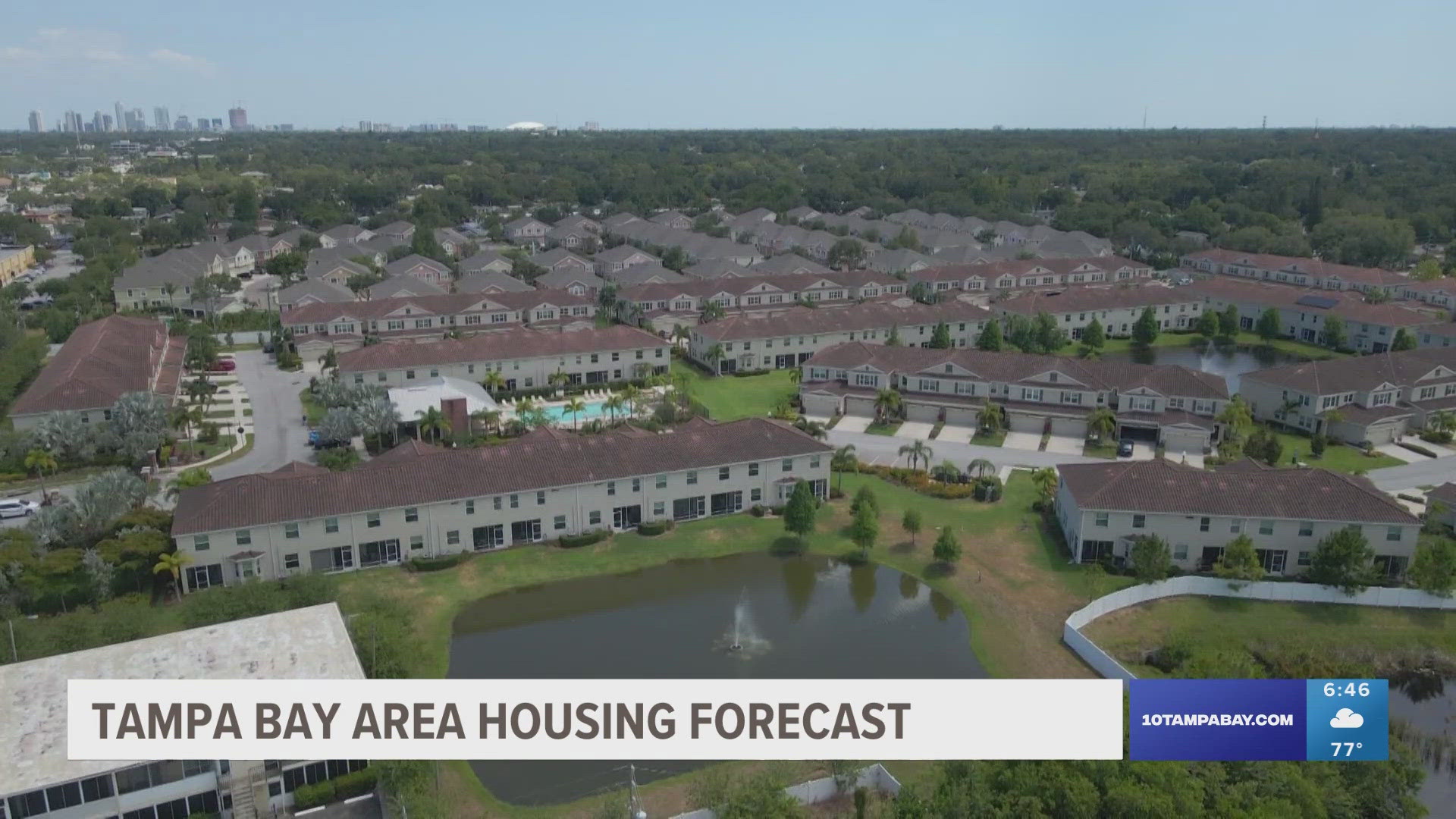Florida’s Housing Crisis: Affordability Expected to Plummet by 2030
ST. PETERSBURG, Fla. — Florida is on a path to becoming one of the states with the least affordable housing by the end of the decade. The Florida Apartment Association predicts the state will need over half a million additional homes to accommodate its growing population.
This staggering estimate is just one of the concerning figures uncovered by 10 Investigates in a comprehensive look at the future of home ownership and renting in the Tampa Bay area.
The first installment of 10 Tampa Bay’s monthlong focus on affordable housing delves into this forecast, revealing a grim outlook for those seeking a place to call home. The emotional toll of this issue is palpable.
Reverend Courtney Jones, a pastor in St. Pete, articulates the frustration and sadness felt by many. “So, first off, my emotions just go, like, from sadness to anger,” she says. The housing crisis affects her congregation and her own family.
One of her congregants, paying $1,450 for a one-bedroom efficiency apartment, is forced to continue working well into his 70s to afford his rent. “If we didn’t buy when we bought, we would not be able to live here… My stepson, for the longest time, had to live with us because he couldn’t afford a place to live,” Jones shares.
This personal testimony underscores a broader trend identified by a report from real estate brokerage company Redfin. Rising home prices and interest rates are widening the real estate wealth gap.
Last year, only 6% of new mortgages were granted to very low-income Americans, defined by Redfin as households earning $41,000 or less annually.
According to the source, in contrast, 45% of new mortgages went to high-income buyers, with a median household income of $172,000. The disparity is even starker in Tampa: just 2% of new mortgages were secured by very low-income earners, while 52% went to high-income buyers.
Adam Grenville, the 2024 president of Great Tampa Realtors, highlights the unrelenting demand for housing in the area. “We still have a tremendous demand.
As long as, you know, 300 people a day are still moving to the Tampa Bay area, they’ve got to live somewhere. And that’s going to continue to put pressure on rent, continue to put pressure on housing, and on resales, and new construction,” he explains.
Projections place Florida among the top 10 states where houses will be the least affordable in 2030. The average house price is expected to soar to $712,439, while the average income will lag significantly behind at $51,377. To meet this demand, the Florida Apartment Association estimates the state needs to build over 570,000 housing units by 2030.
Despite this daunting forecast, there are signs of a slowdown in rent growth. Florida Realtors’ Chief Economist, Brad O’Connor, PhD, notes a significant deceleration in the growth rate of rents over the past year. “They’re still going up, right? They’re going up, rents are going up.
But at least the growth rate at which they’re growing has slowed down pretty significantly over the last year or so, as these high interest rates have really kind of thrown a wrench in the market,” O’Connor states.
In a region famed for its beautiful beaches, the future of housing is also inextricably linked to climate change. Cara Woods Serra, director of resiliency at the Tampa Bay Regional Planning Council, points out that coastal and low-lying areas will be most affected by rising sea levels.
“So, a lot of our region is going to be affected by sea level rise. All of our region is going to be affected by increasing temperatures and increasing rain,” she explains.
Serra co-authored a 2022 report advocating for new housing construction, particularly affordable housing, to be directed to higher elevations and inland areas. This strategy aims to mitigate the impact of sea level rise and prevent displacement.
Researchers at Florida State University have found that sea level rise could lead to gentrification in inland communities as coastal residents seek higher ground. “Gentrification — that could raise property values, increase rents. And so that makes it a less affordable community,” Serra notes.
FSU researchers identified four neighborhoods in Pinellas County at high risk of displacement: two coastal areas in Clearwater and Largo, and two predominantly Black inland areas in Lealman and South St. Pete.
Reverend Jones reflects on the need for accountability and action. “Being a pastor, I think about, like, well, what would Jesus actually do if he was here in this day and time? … Jesus would hold these officials accountable,” she says.
Jones is actively pushing for change through FAST (Faith and Action for Strength Together), a coalition of faith leaders advocating for more affordable housing in Pinellas County.
Read more news:
- Triumph in Tennessee: Local Woman’s Victory Over Addiction and Academic Success
- Church Vandalism in Irwin: Youths Suspected of Damaging Sacred Instruments at Local Church










